

| Richmond remained the capitol of the state of Virginia after the American Revolution. With the aid of French draftsman, antiquary, and decorator Charles-Louis Clérisseau, Jefferson designed this Neoclassical building (the central structure) as one of the first state capitols in the new Republic. This building, for Jefferson, represented a dramatic departure from British influence (symbolized for him in the buildings of Williamsburg). | ||
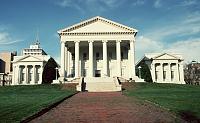
|
In Jefferson's "Account of the Capitol in Virginia," he explains that the temple form derives from "the Temples of Erectheus at Athens, of Balbec, and of the Maison quarrée....All of which are nearly of the same form and proportions, and are considered as the most perfect examples of cubic architecture, ad the Pantheon of Rome is of the spherical" (quoted in Brownell et al 214). Of these, the only structure Jefferson actually saw was the Maison Carrée at Nîmes in the south of France. | |

|
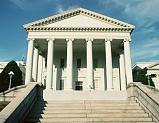 |
It is not clear what Jefferson meant by "cubic architecture," but he set a precedent by using a temple form for an important secular building. Like his Monticello, this capitol building has a commanding and impressive site. |
Views of the portico | ||
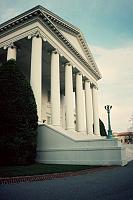
|
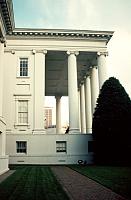
|
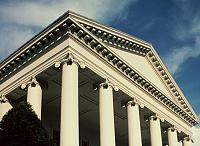
|
| The temple form has Ionic capitals and unfluted columns. According to Jefferson, he yielded to the wishes of Clérisseau in using the "modern" Ionic capitol, a variant designed by Palladio's pupil Scamozzi. In this variant the scrolls are on the diagonal with four identical faces in between, unlike the ancient versions with the "corner" problem. For a contrasting Ionic capital, see Strickland's later Tennessee State Capitol. | 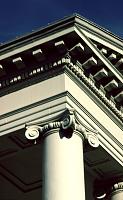
|
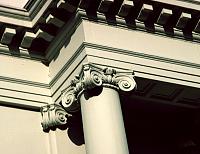
|
The rotunda--a square room but with a dome | ||
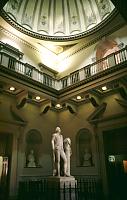
|
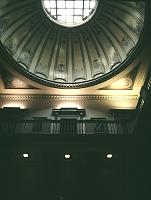 |
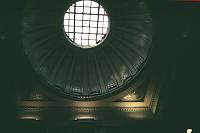
|

|

|
The fence which surrounds the complex, 1819Note the main posts with the fasces, a bundle of rods tied around the shaft of an axe, which had been used by the ancient Romans to symbolize unity and civic authority. |
Noland & Baskervill (Richmond); Frye & Chesterman (Lynchburg) and John Kevan Peebles (Norfolk) | ||
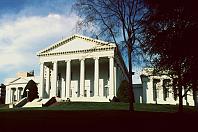
|
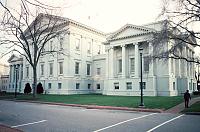
|
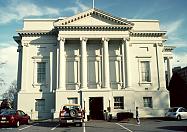 |
 Go to Thomas Jefferson Architecture Index.
Go to Thomas Jefferson Architecture Index.
 Click here to return to index of art historical sites.
Click here to return to index of art historical sites.
 Click here to return to index of artists and architects.
Click here to return to index of artists and architects.
 Click here to return to chronological index.
Click here to return to chronological index.
 Click here to see the home page of Bluffton College.
Click here to see the home page of Bluffton College.
